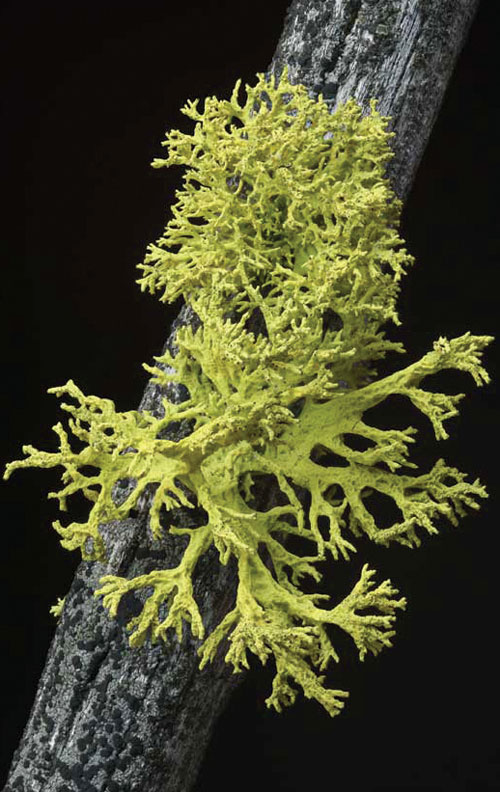- Editorial Offices
- 325 Brantly Hall
- Missoula, MT 59812
- (406) 243-2488
- themontanan@umontana.edu
- Icons By Maria Maldonado
 Dating back nearly 150 years, a classic example of symbiosis has been the lichen: a mutually helpful relationship between an alga and a fungus.
Dating back nearly 150 years, a classic example of symbiosis has been the lichen: a mutually helpful relationship between an alga and a fungus.
Now, that well-known dualistic relationship is being challenged. Researchers at UM, working together with colleagues from Austria, Sweden and Purdue University, have found that some of the world’s most common lichen species actually are composed of three partners – not the widely recognized two.
Their work, led by UM postdoctoral researcher Toby Spribille, was published as the cover article in the July 29 issue of the journal Science. By using recent advances in genomic sequencing, the research team showed that many lichens contain not only the expected alga (the photosynthesizing partner) and fungus, but also a previously unknown second fungus that had never before been detected.
“This is a pretty fundamental shake-up of what we thought we knew about the lichen symbiosis,” Spribille says. “It forces a reassessment of basic assumptions about how lichens are formed and who does what in the symbiosis.”
This discovery came about when Spribille, working as part of UM microbiologist John McCutcheon’s team, set out to answer why one of two closely related lichen species, common in western Montana, contains substances toxic to mammals while the other does not.
Previous DNA studies concluded that the toxic and nontoxic forms of the known fungal and algal partners of these lichens were identical, leaving unsolved the mystery of how one lichen acquires its toxic properties while the other does not. In fact, a longstanding riddle in lichen research has been that even in cases where the two known symbiotic partners are exactly the same, they sometimes combine to form lichens that differ wildly in appearance and in chemistry.
Spribille, who has studied the biology and taxonomy of lichens for 15 years, teamed up with McCutcheon, whose lab uses advanced genomic and microscopic tools to study insect symbioses, to see if they together could solve the mystery.
“When it comes to the study of lichens, he’s one of the world’s best – a really high-class scientist,” McCutcheon says. “What my lab could offer was experience with genomics on difficult samples, and – because we traditionally work on insect systems – a different perspective on symbiosis.”